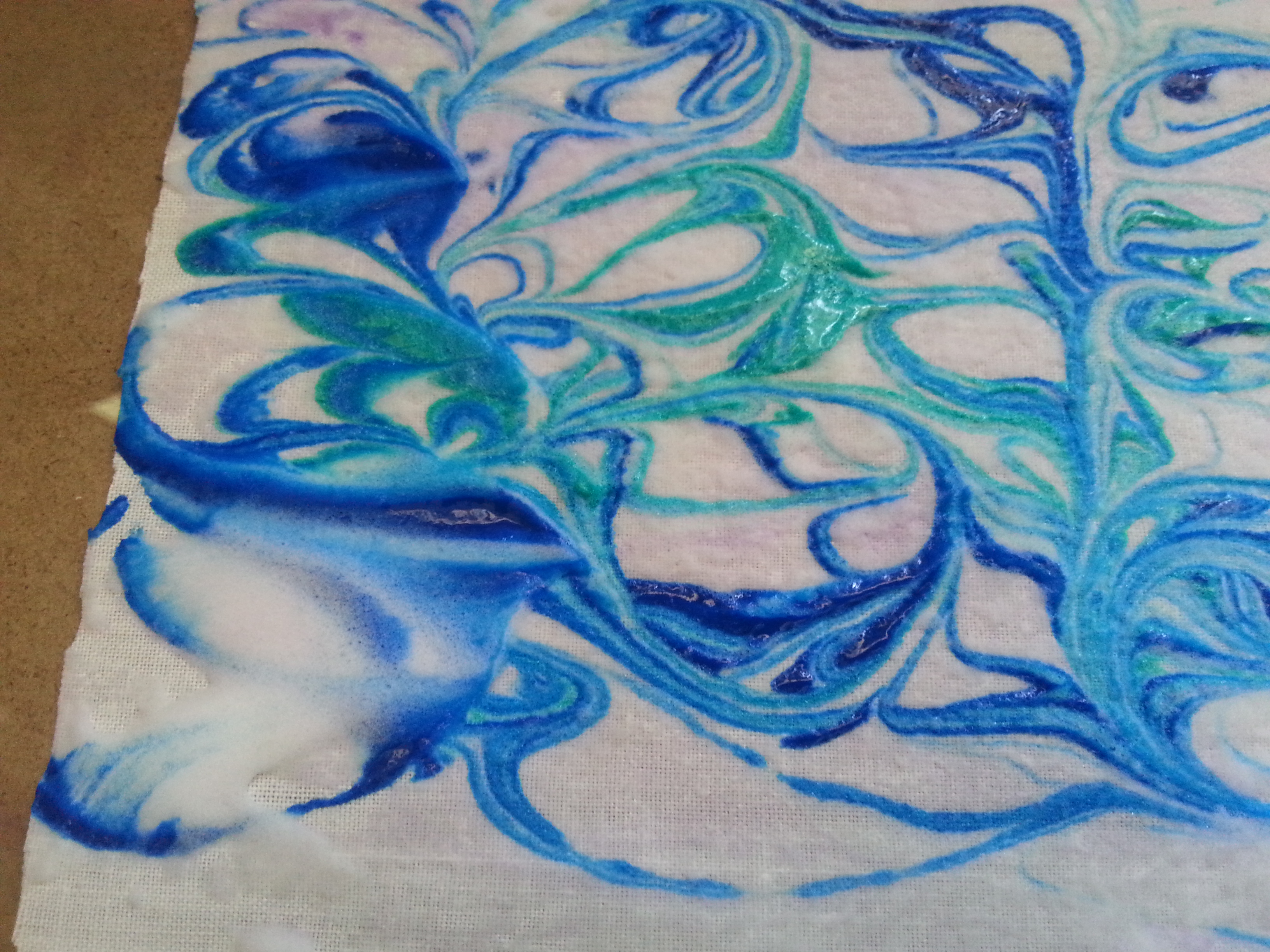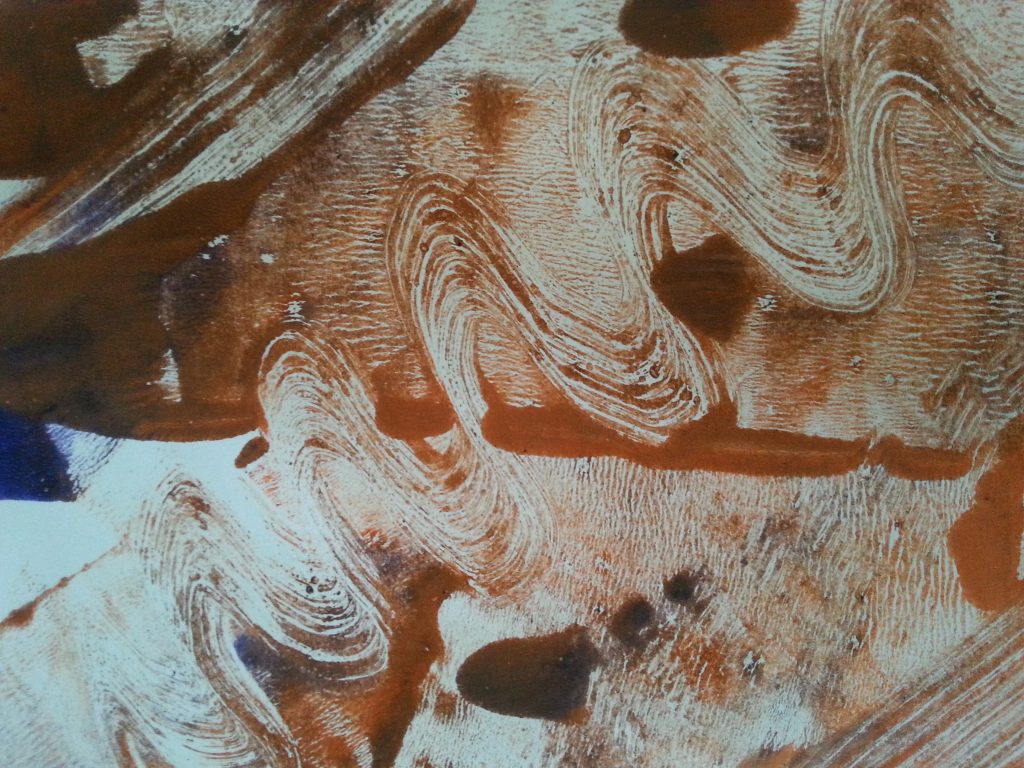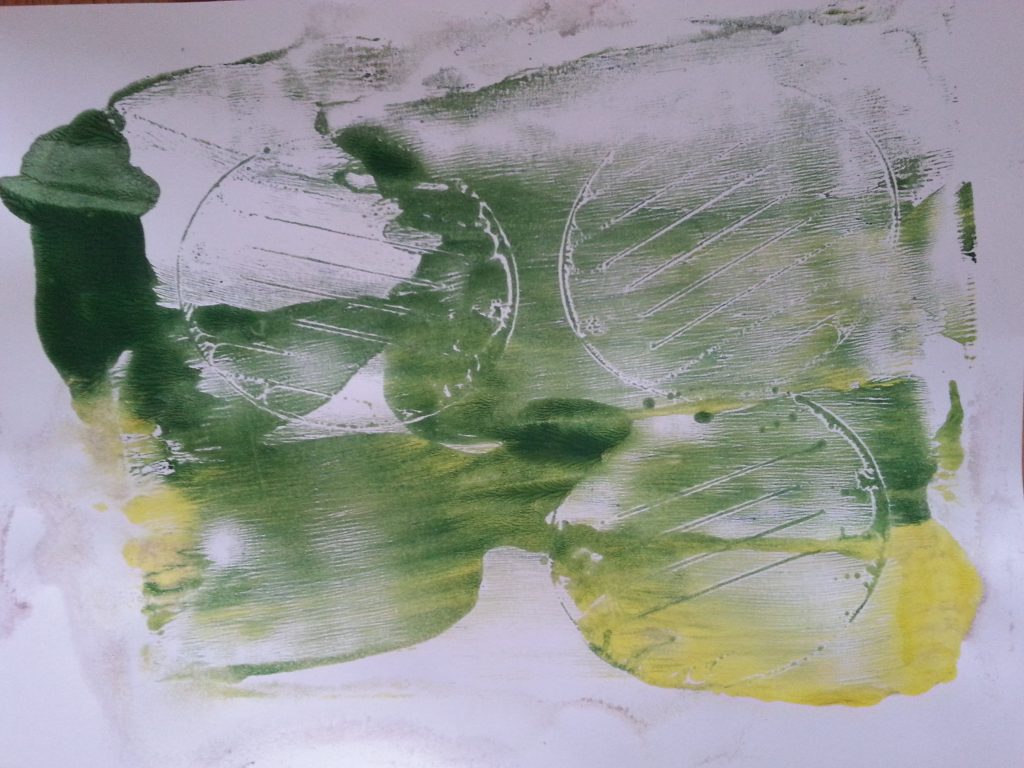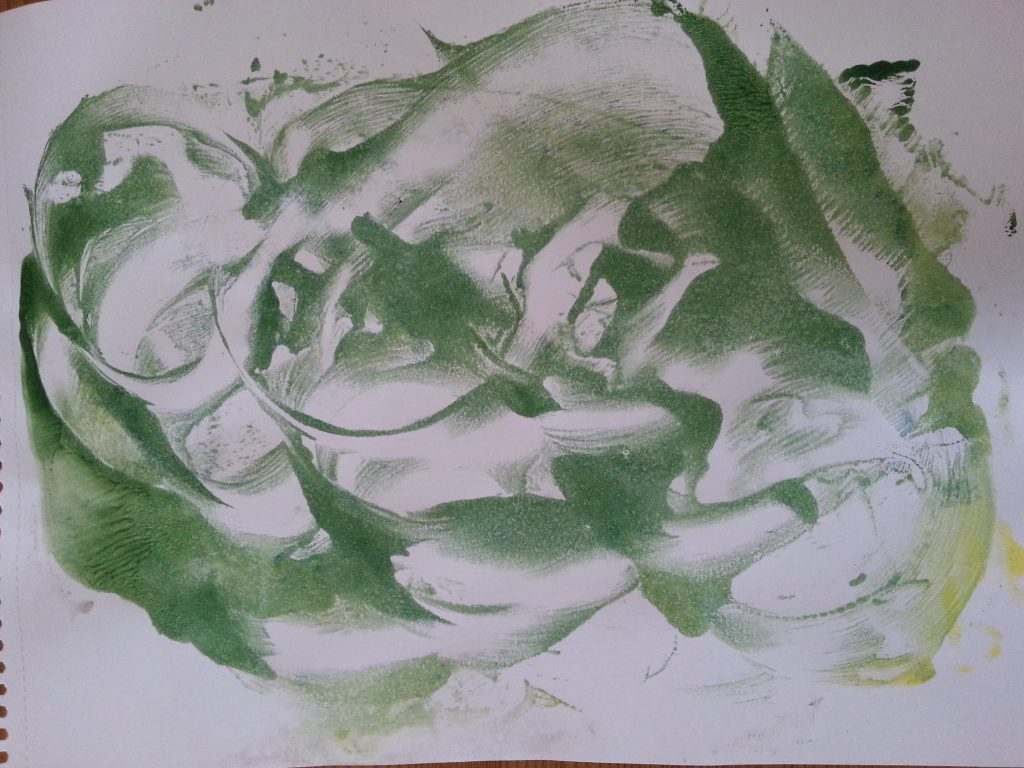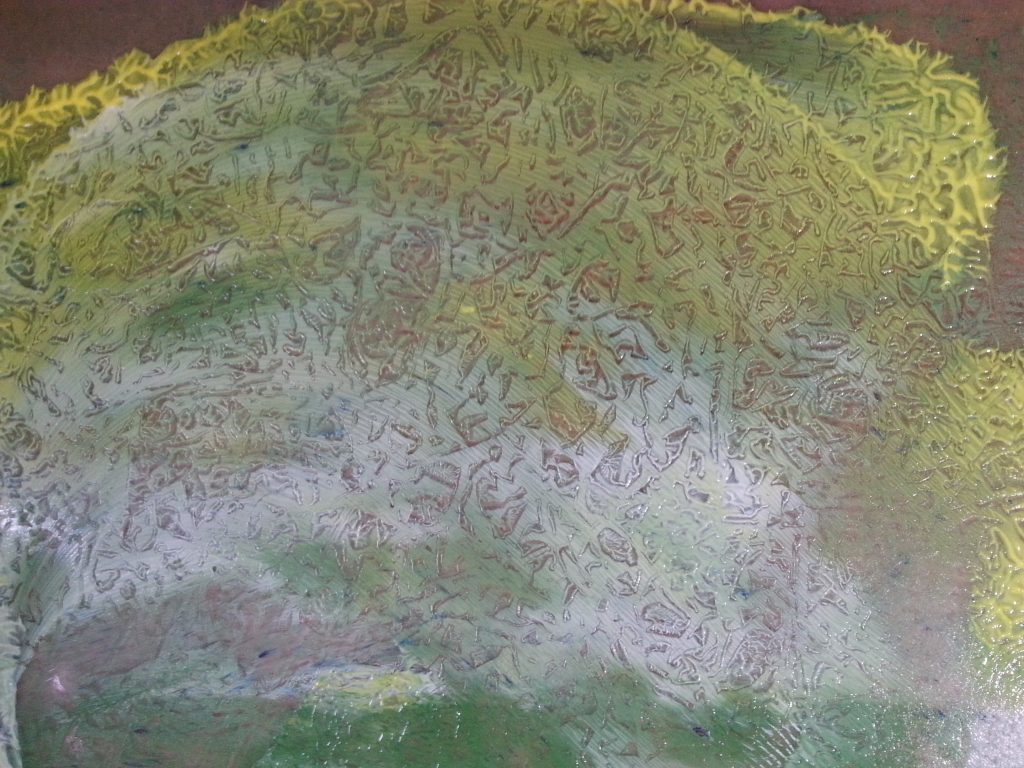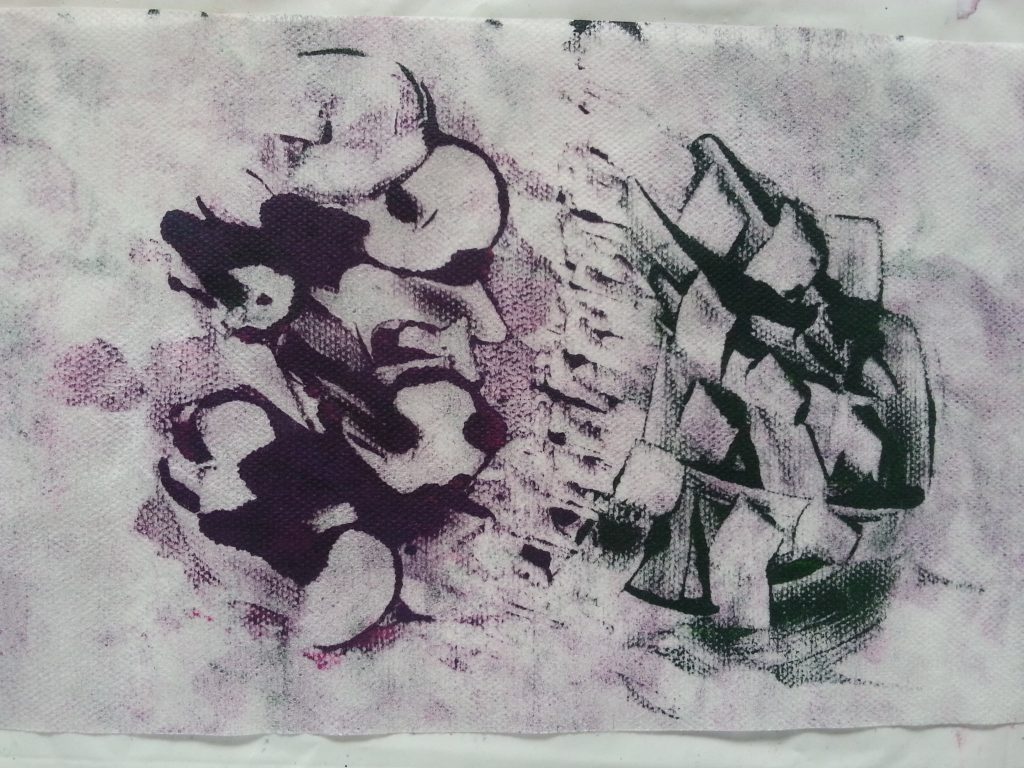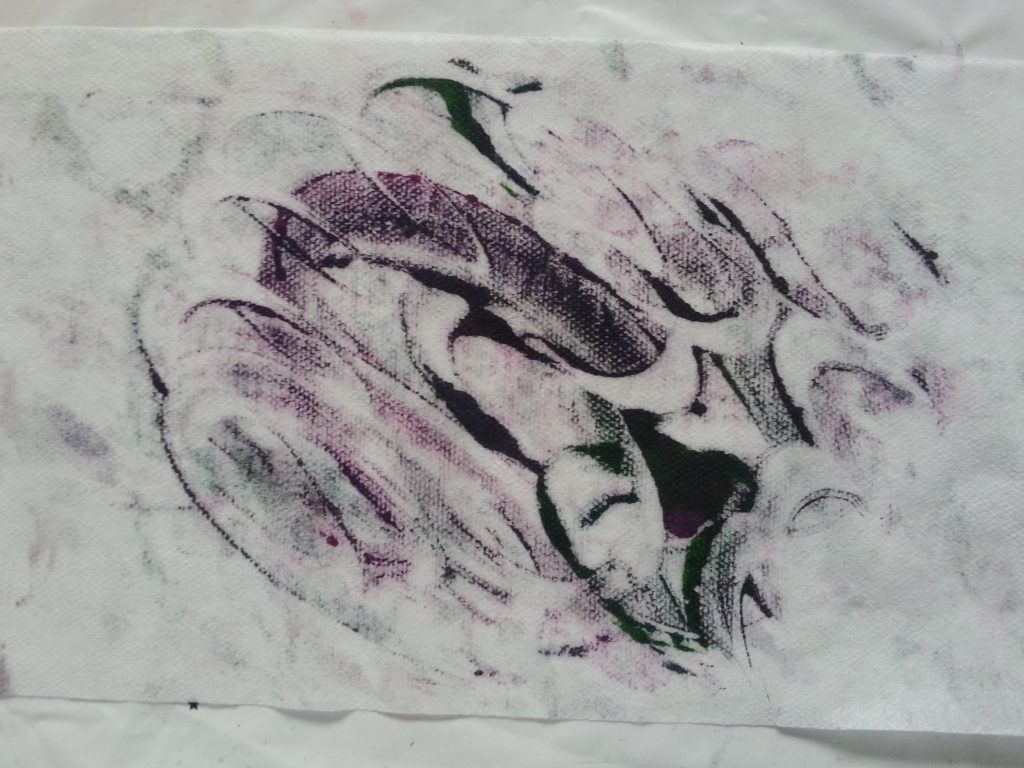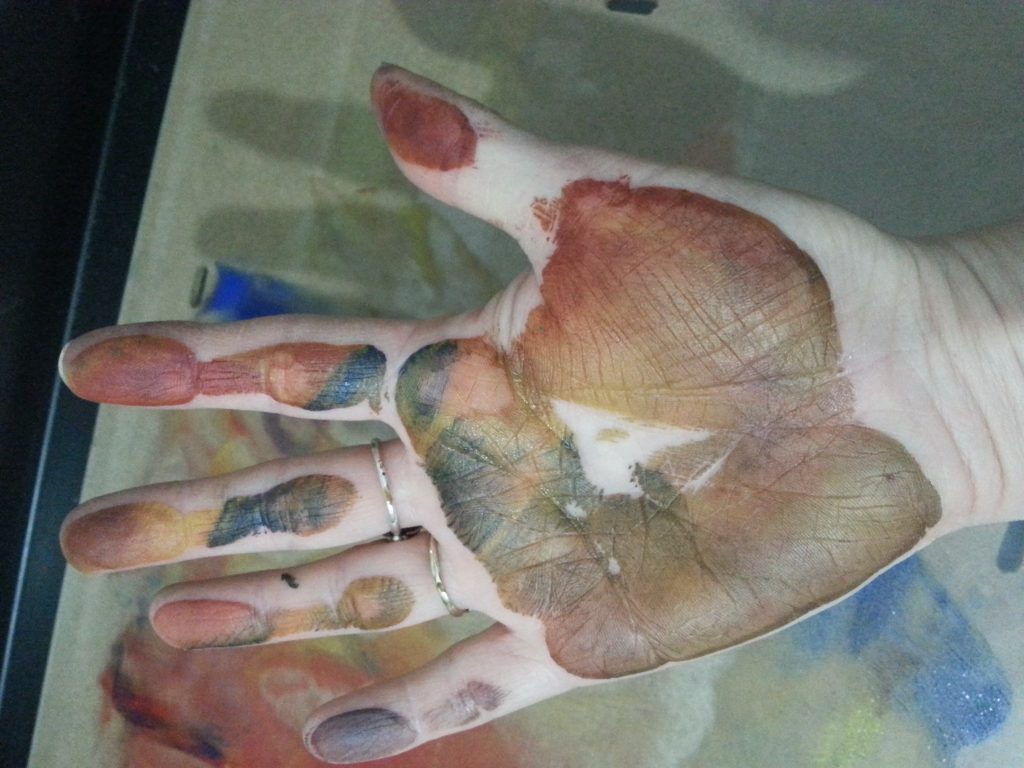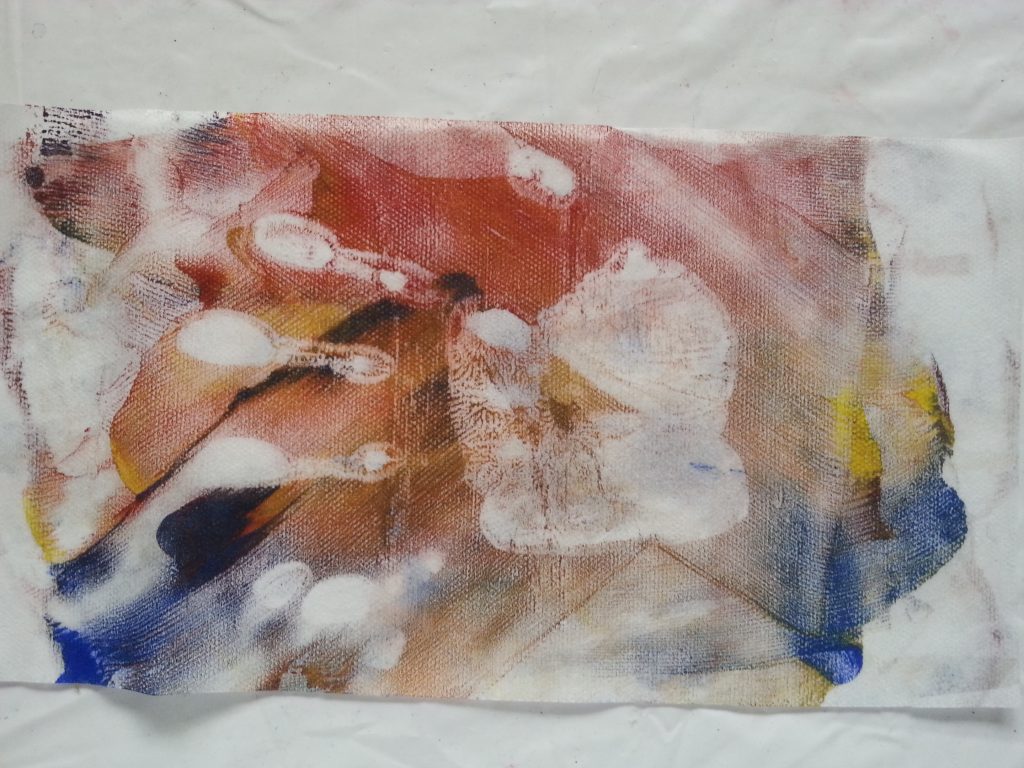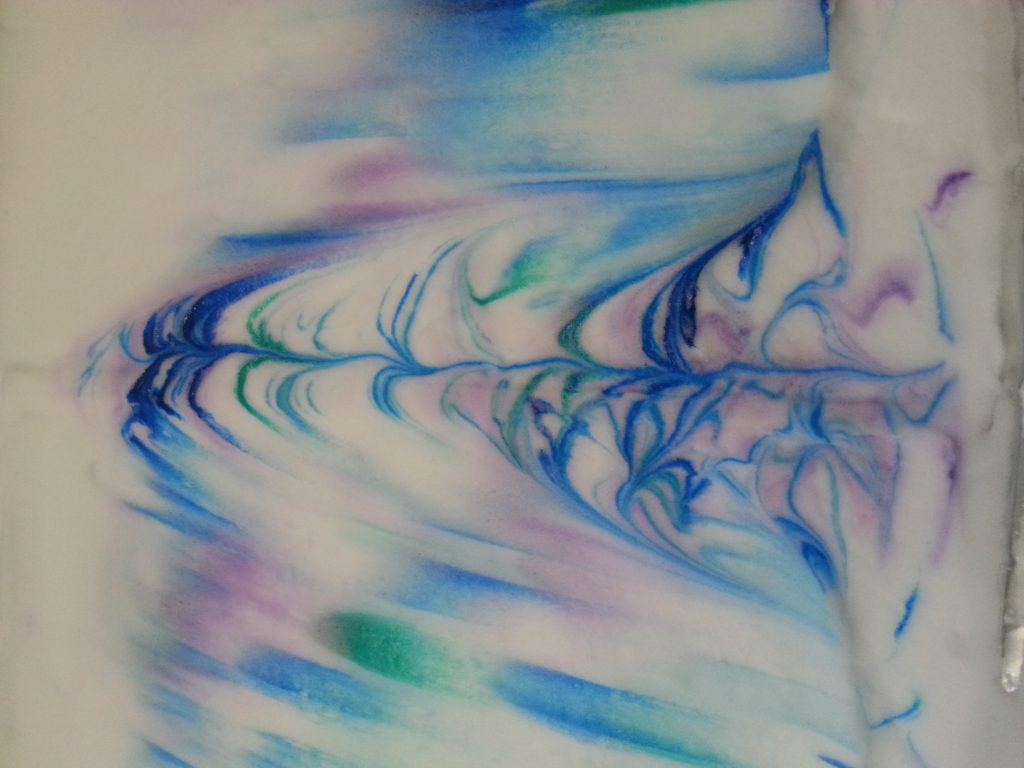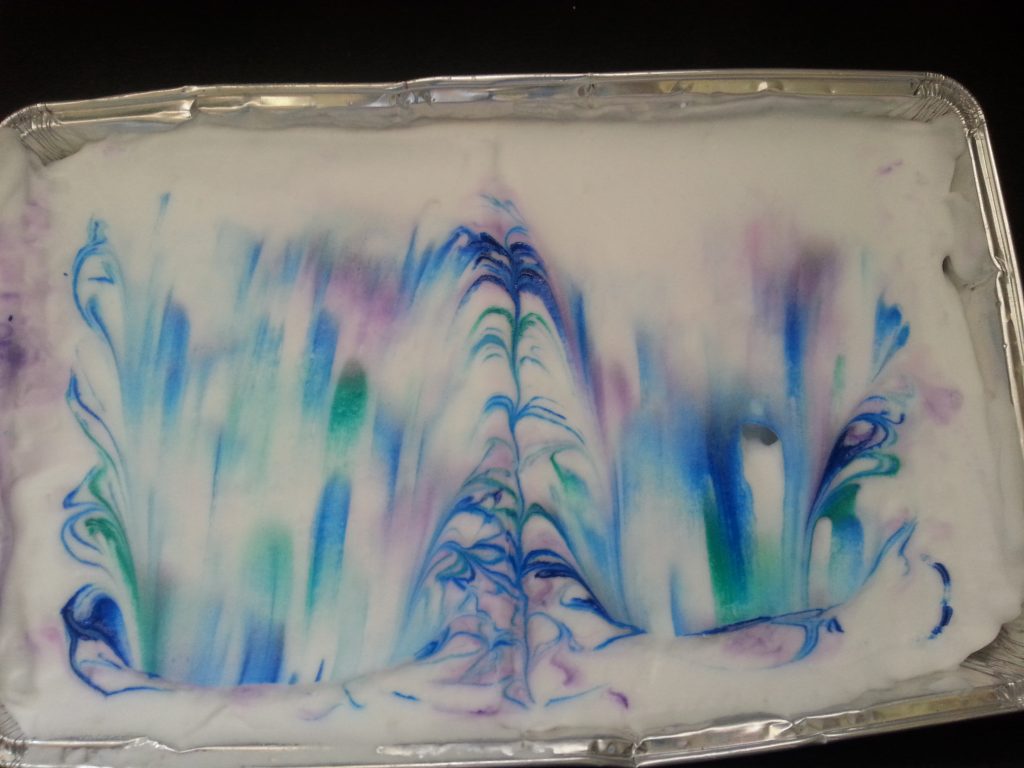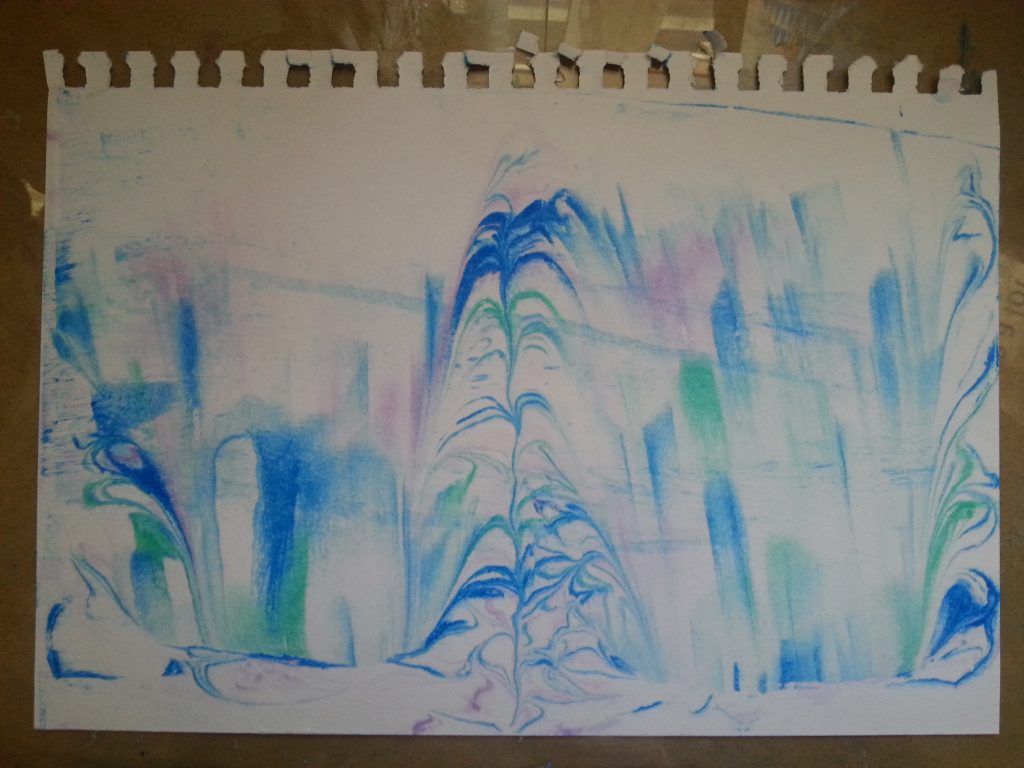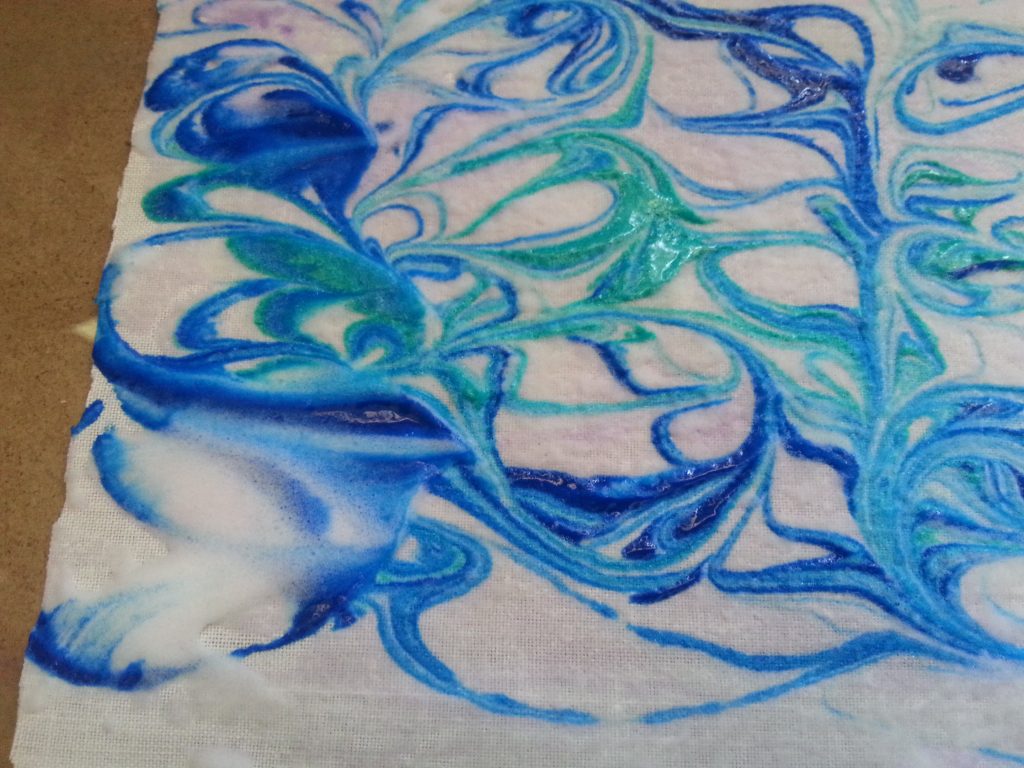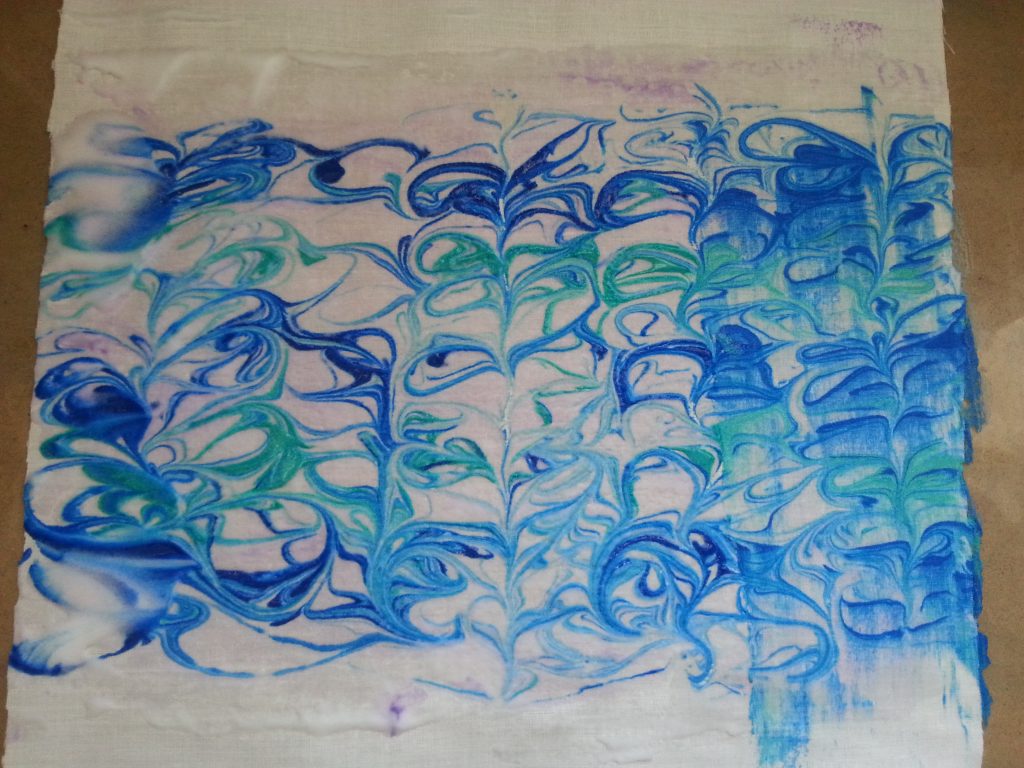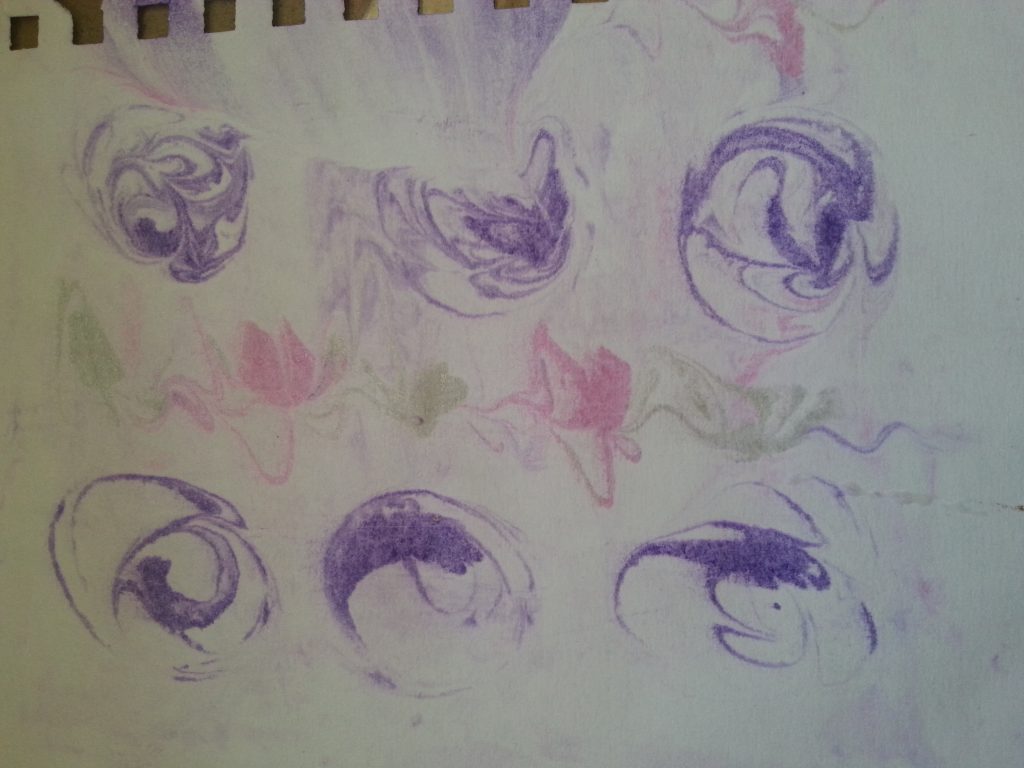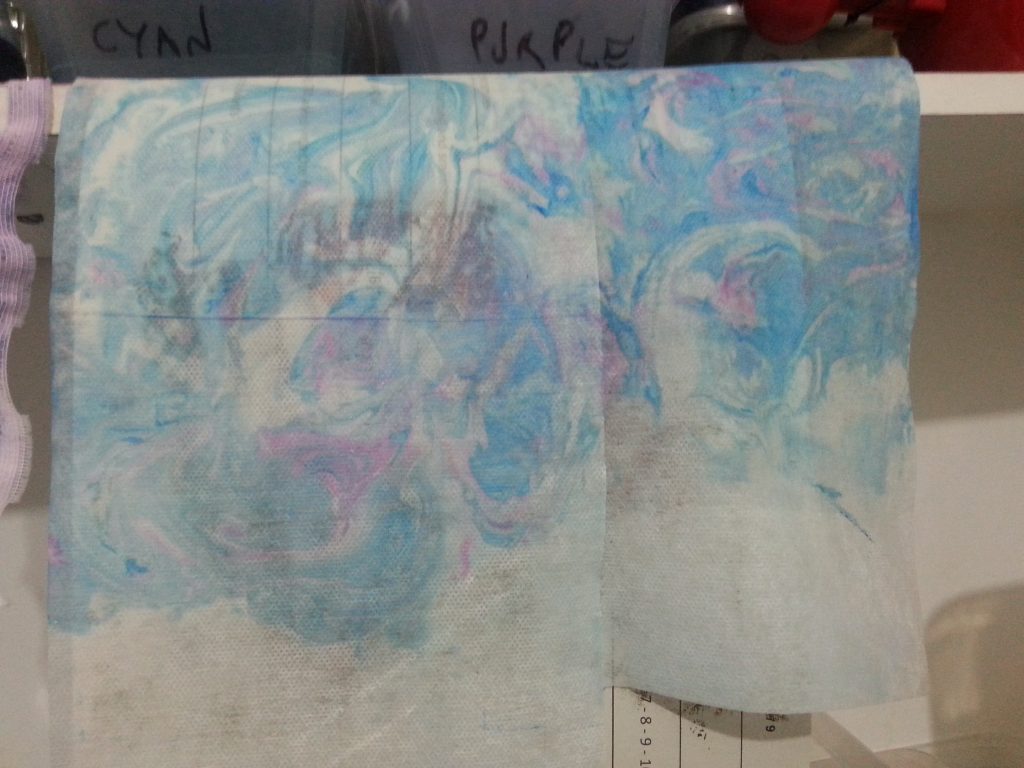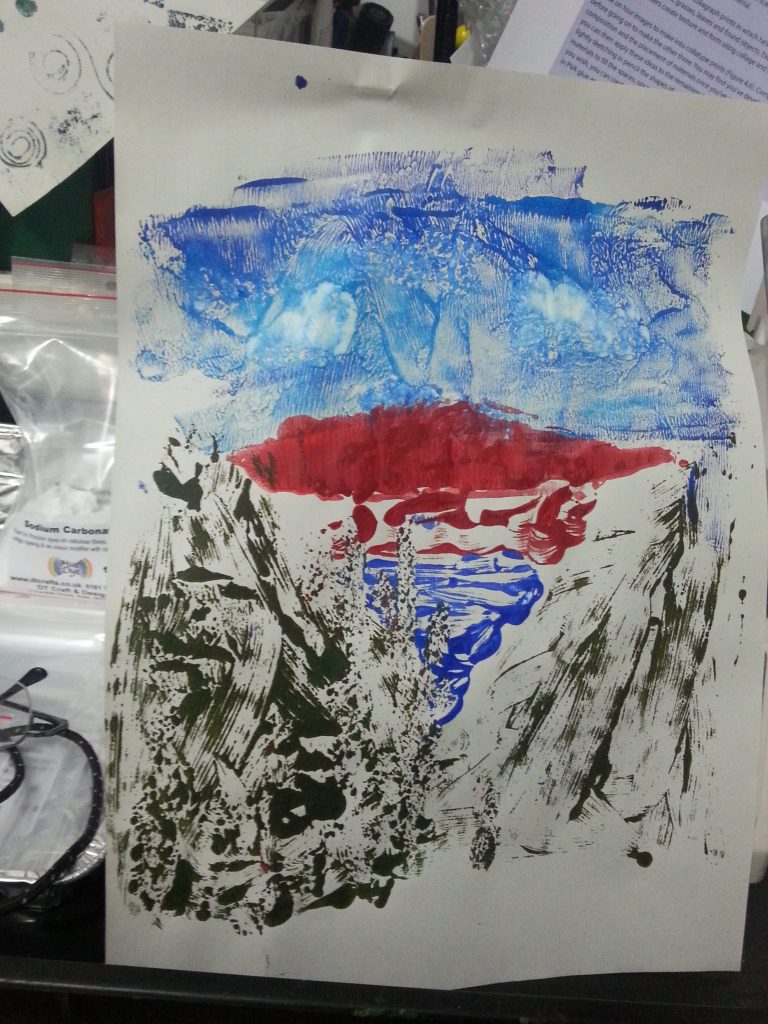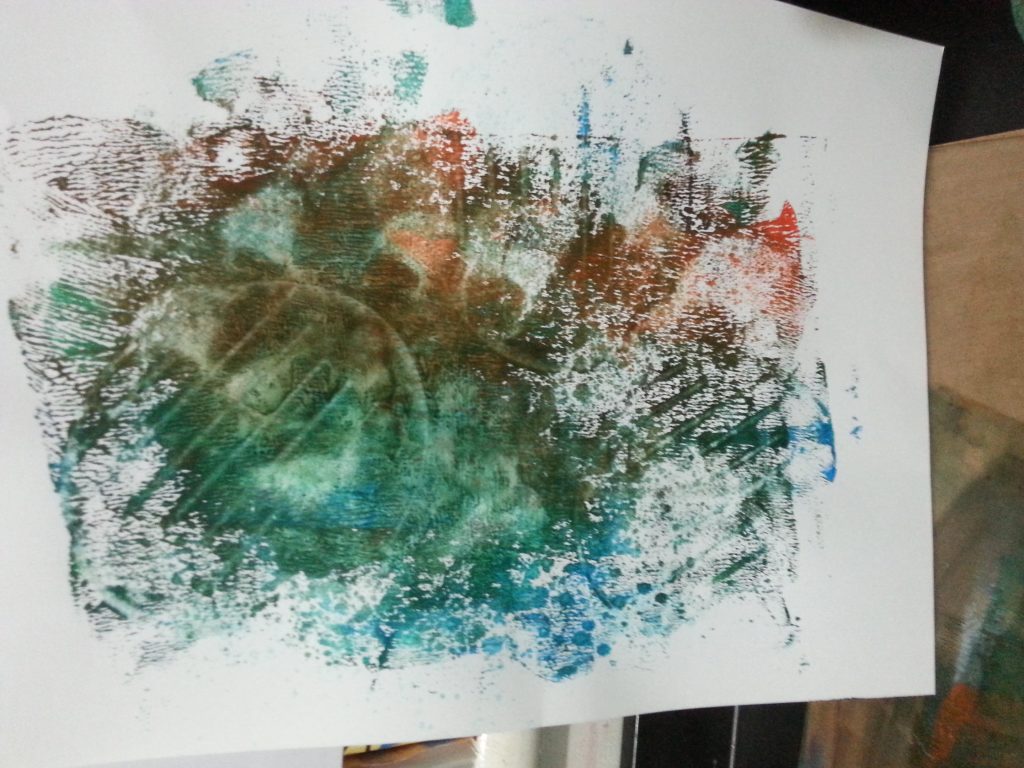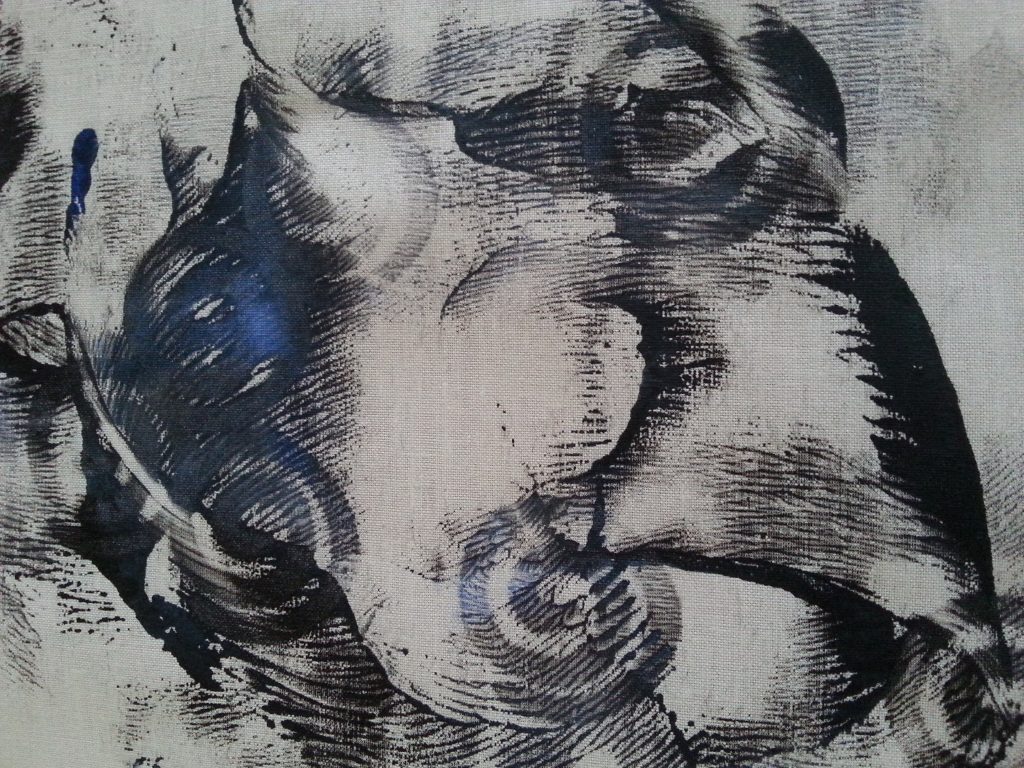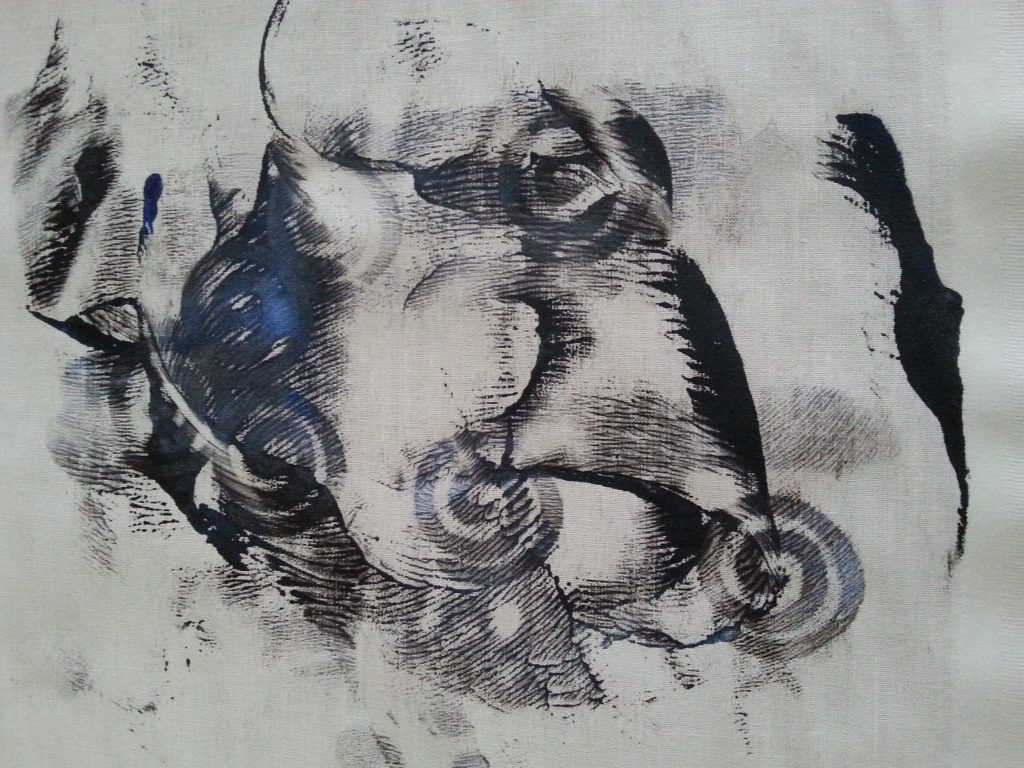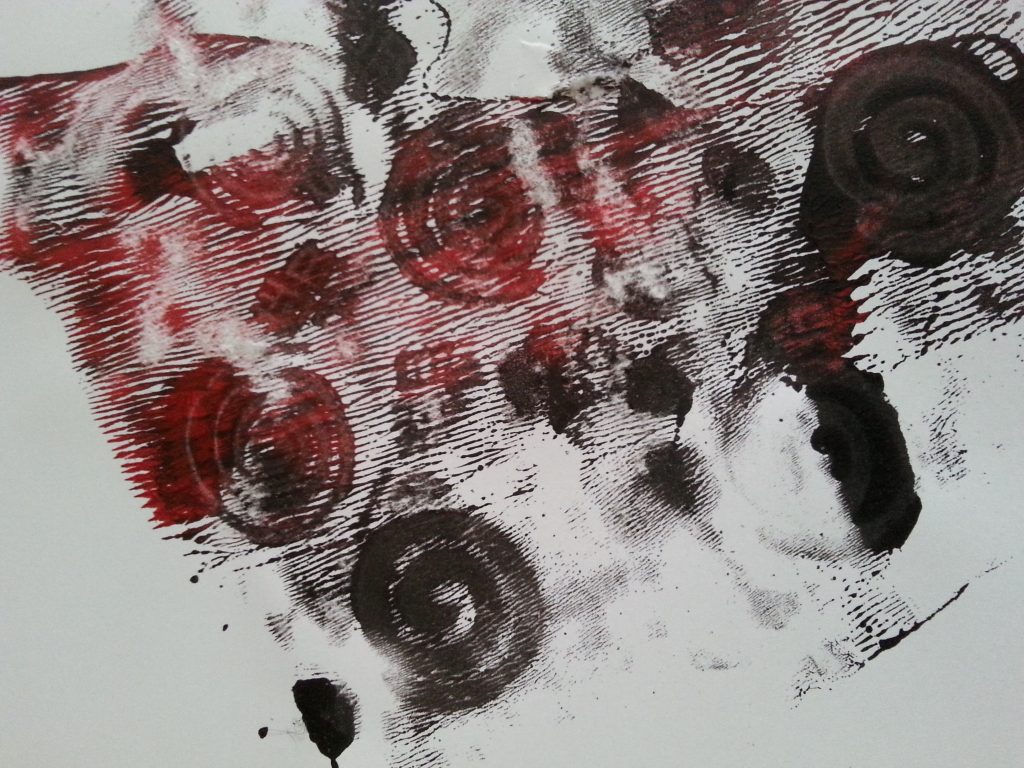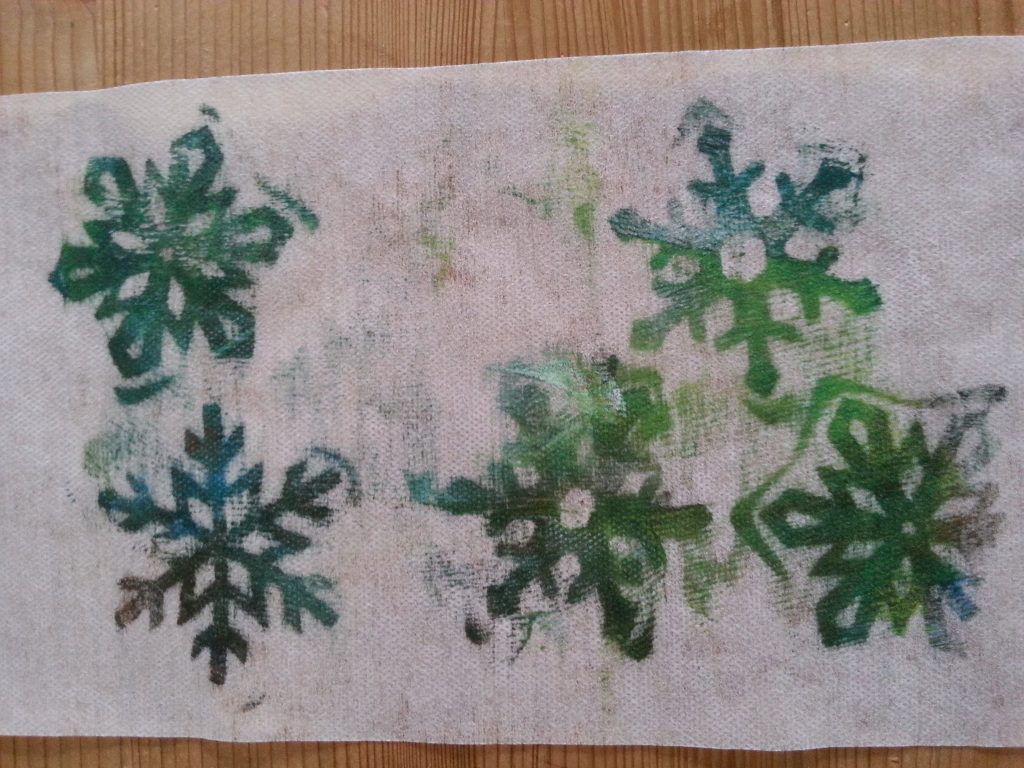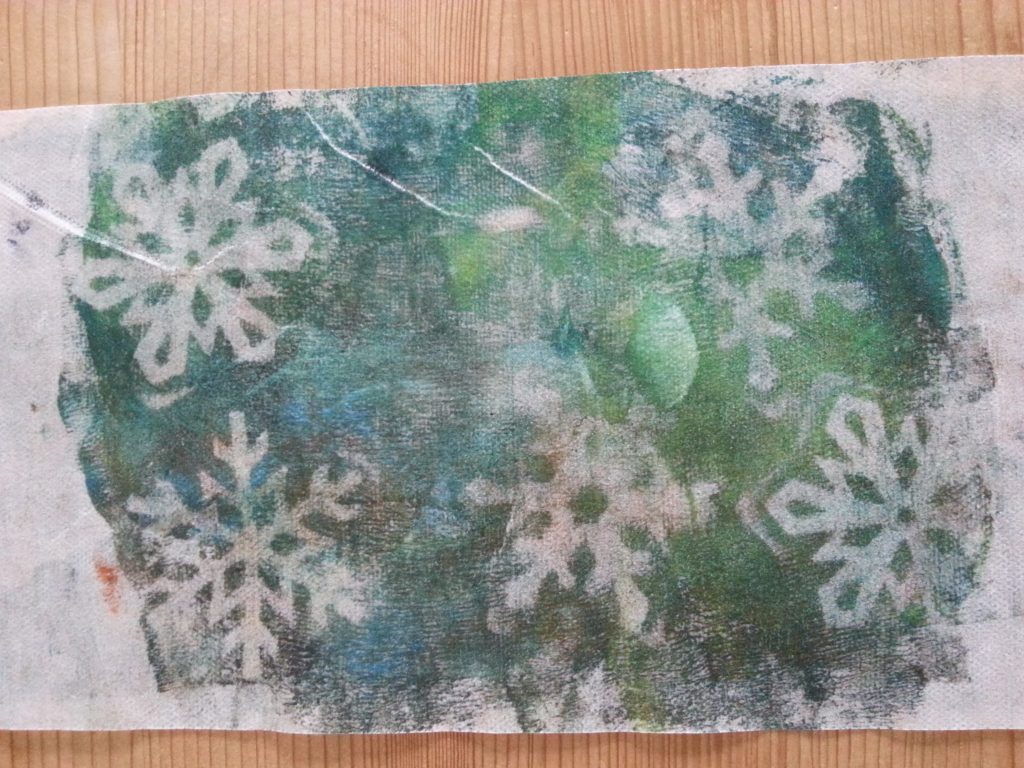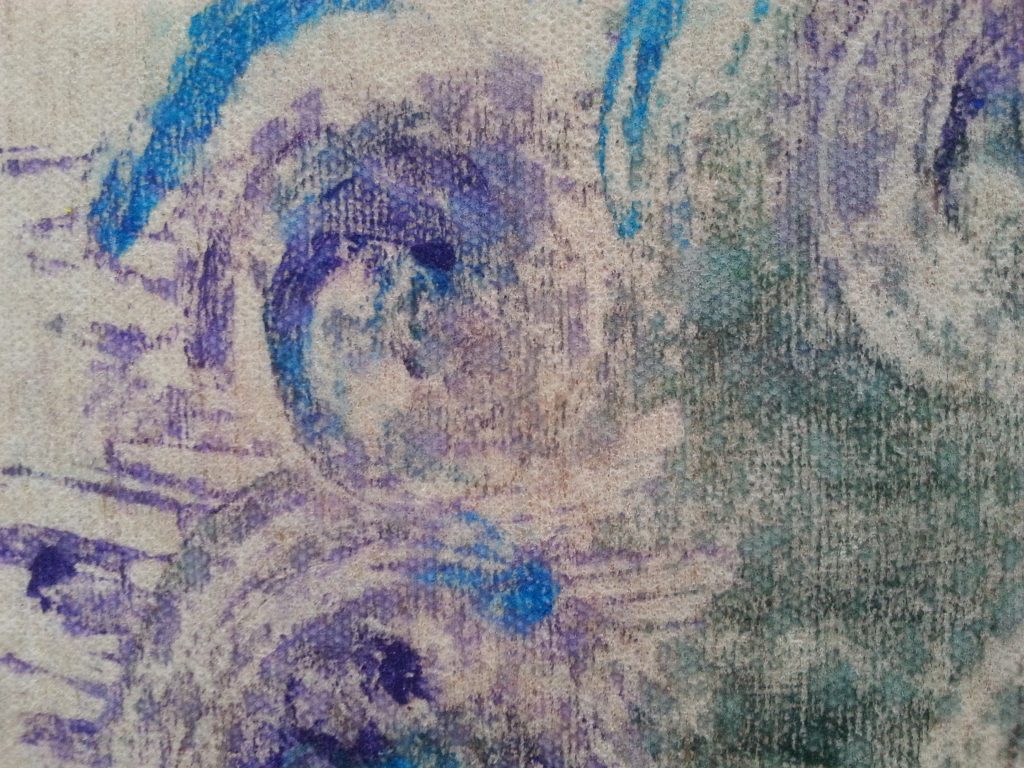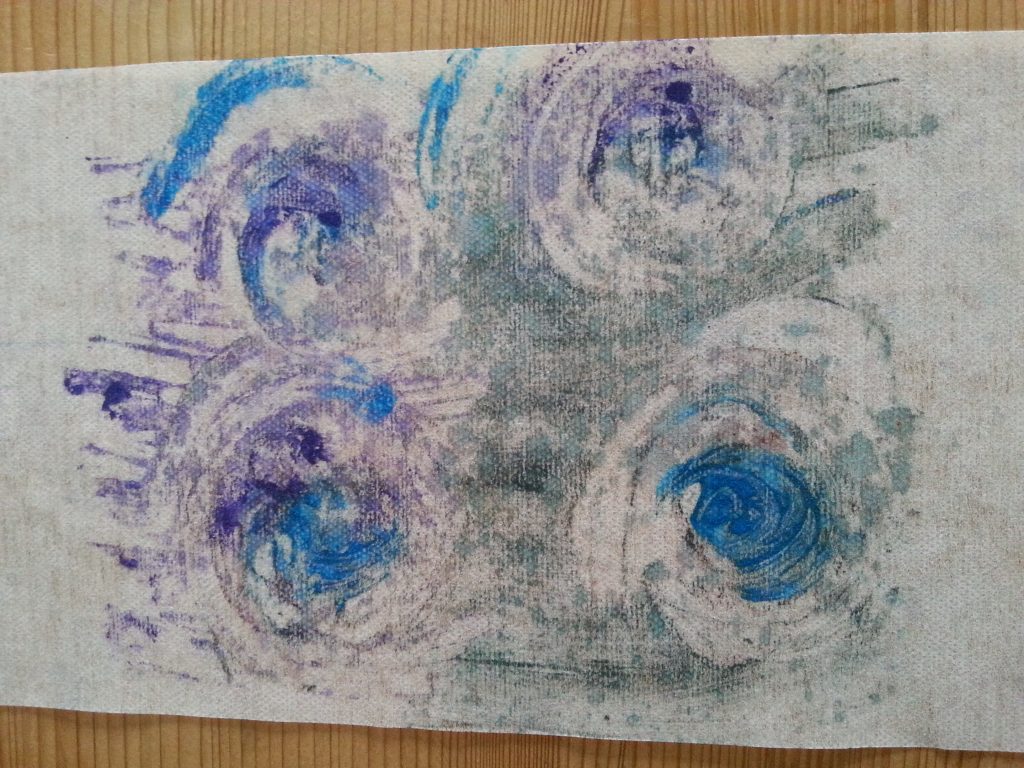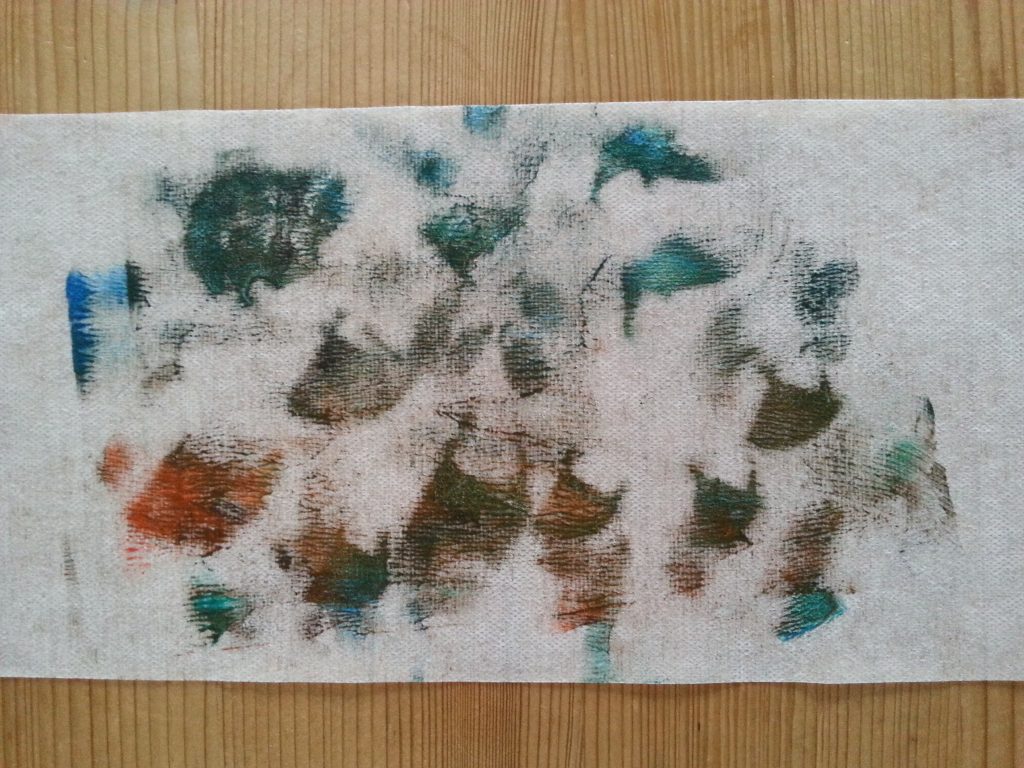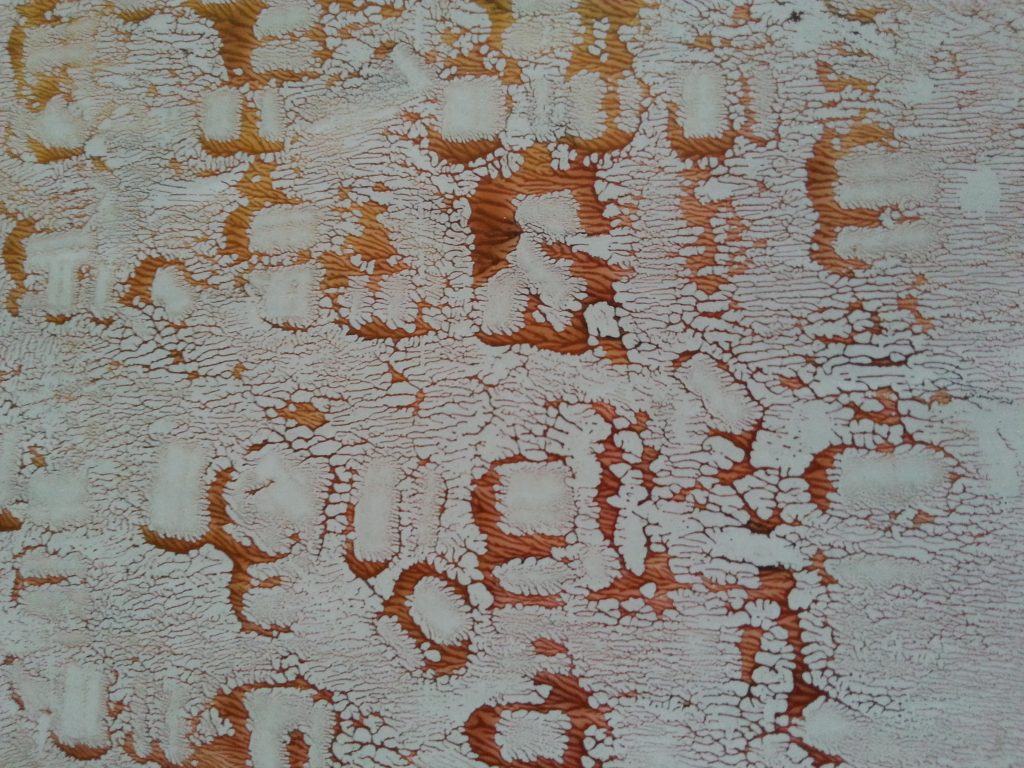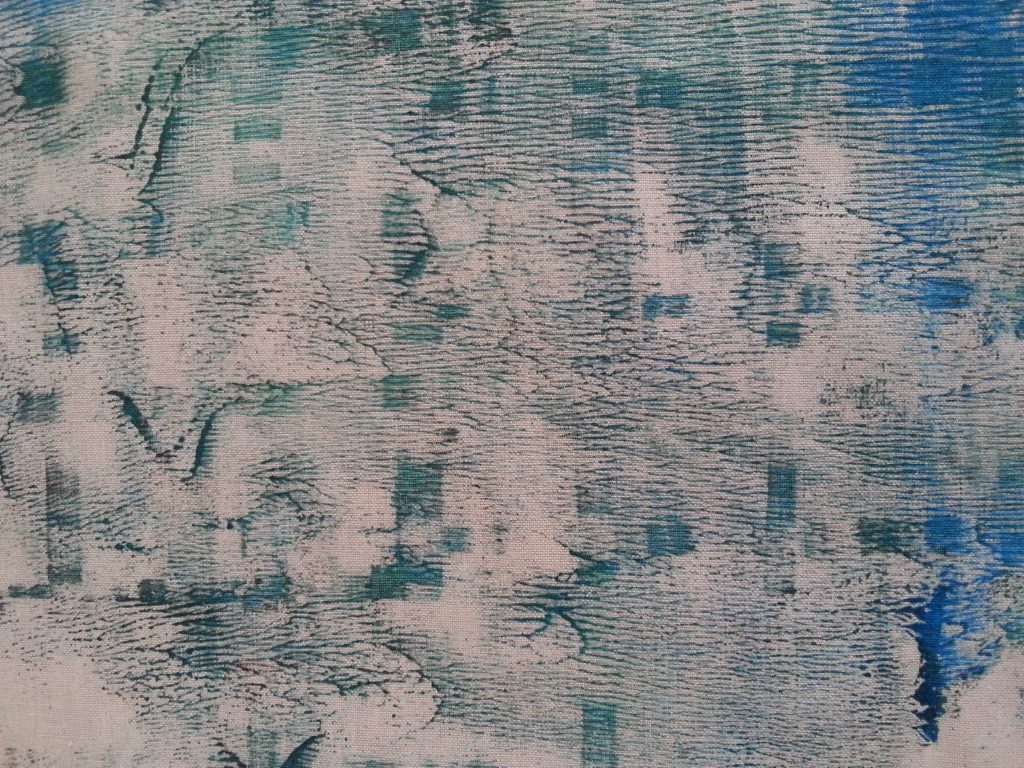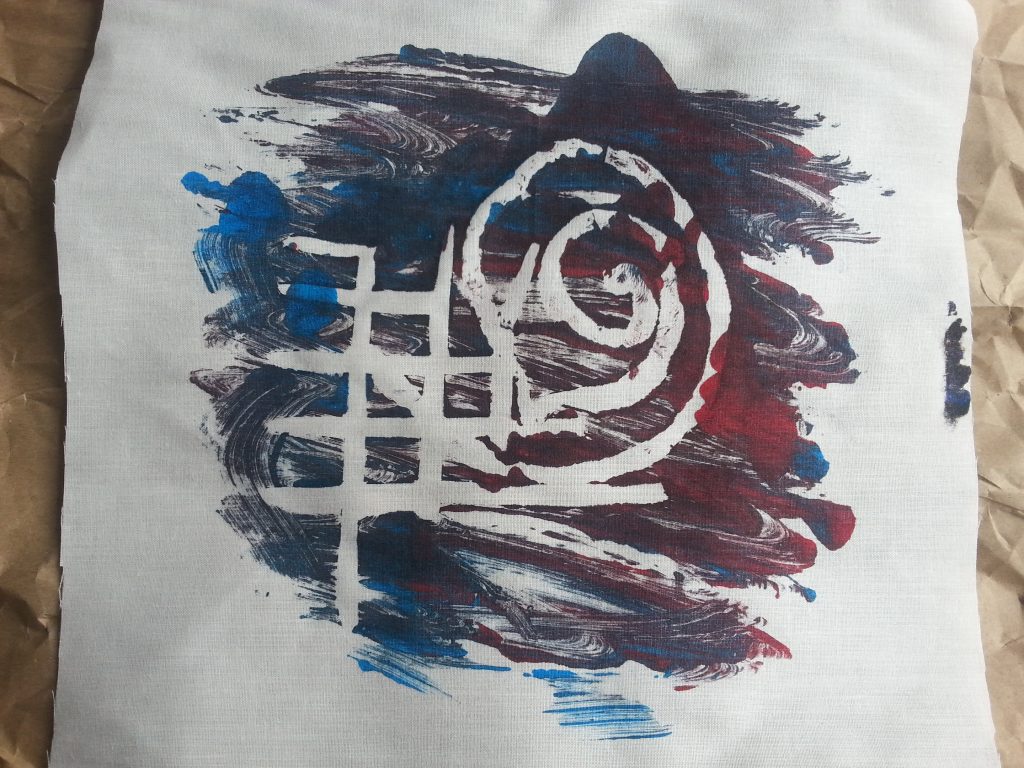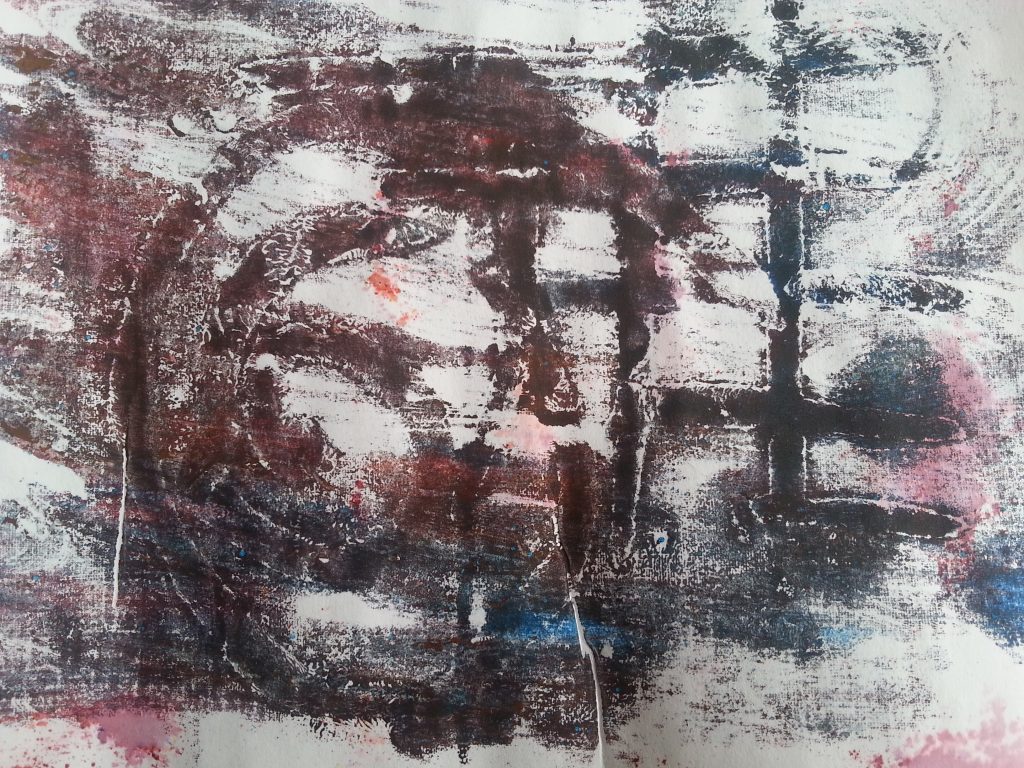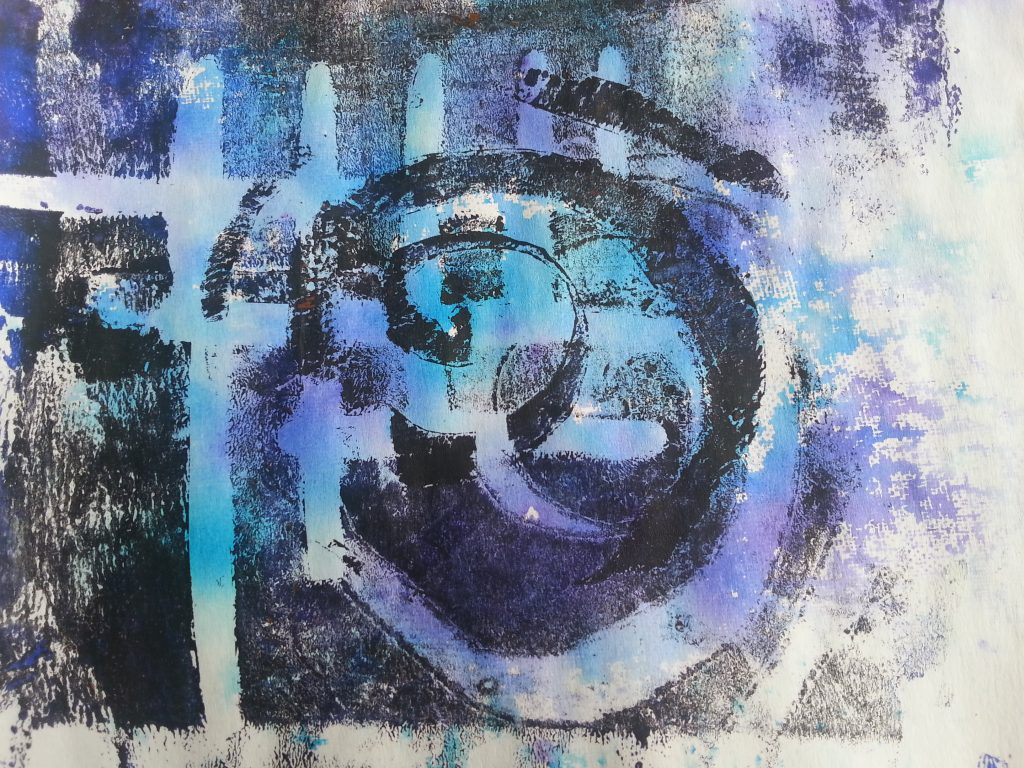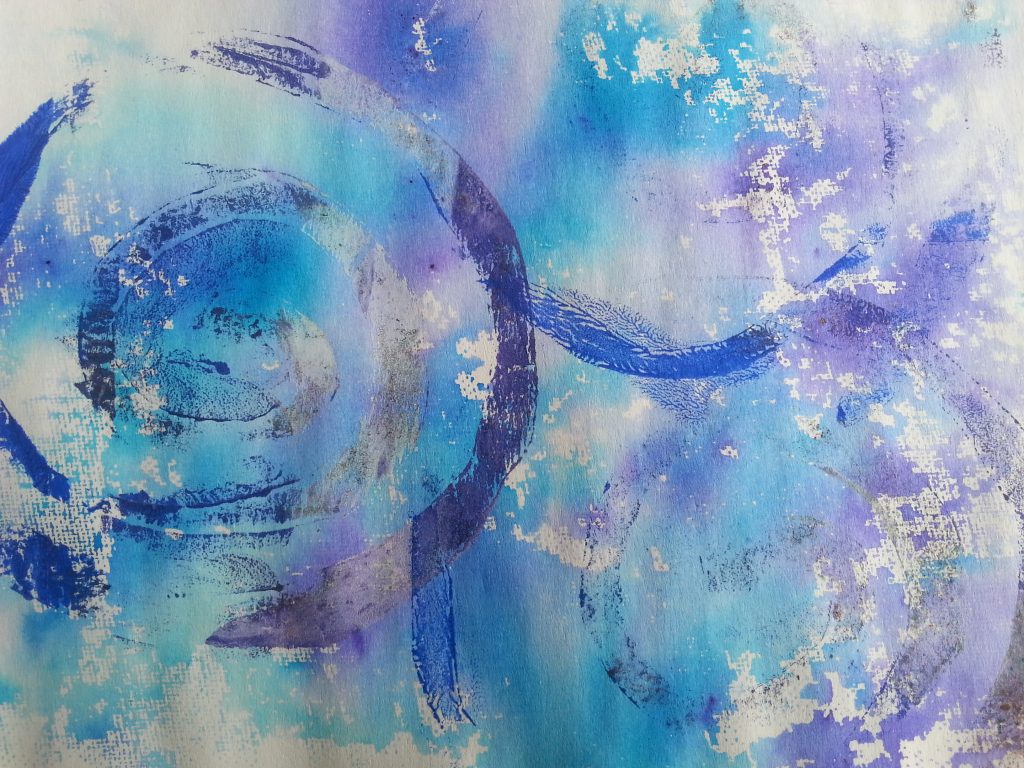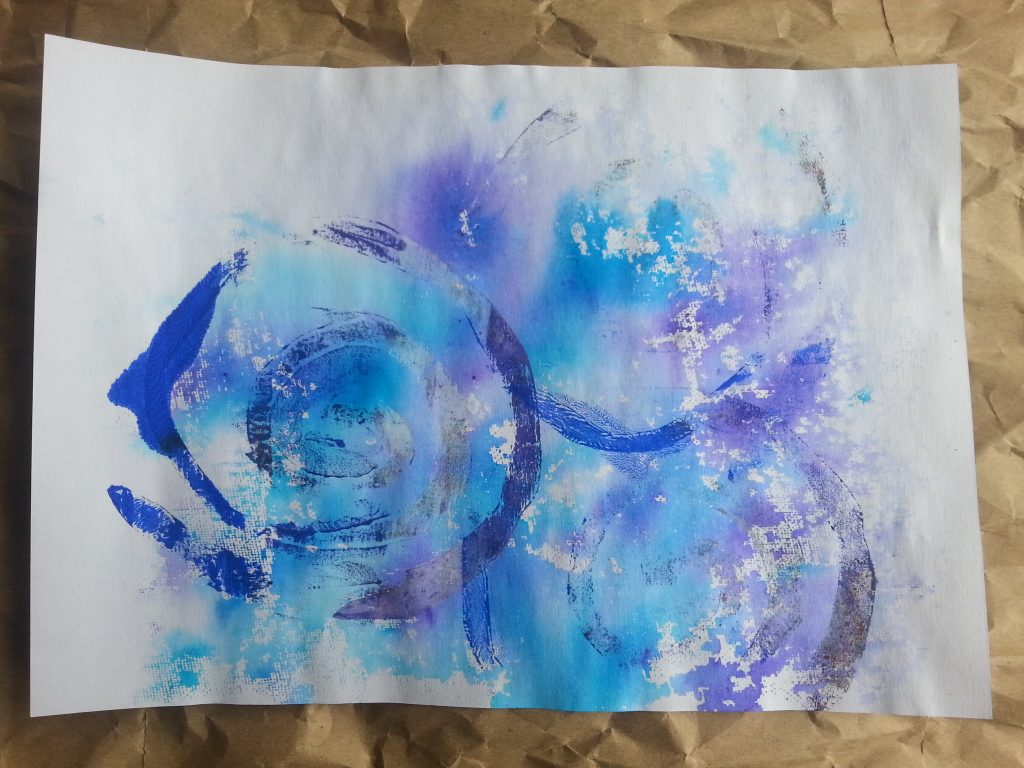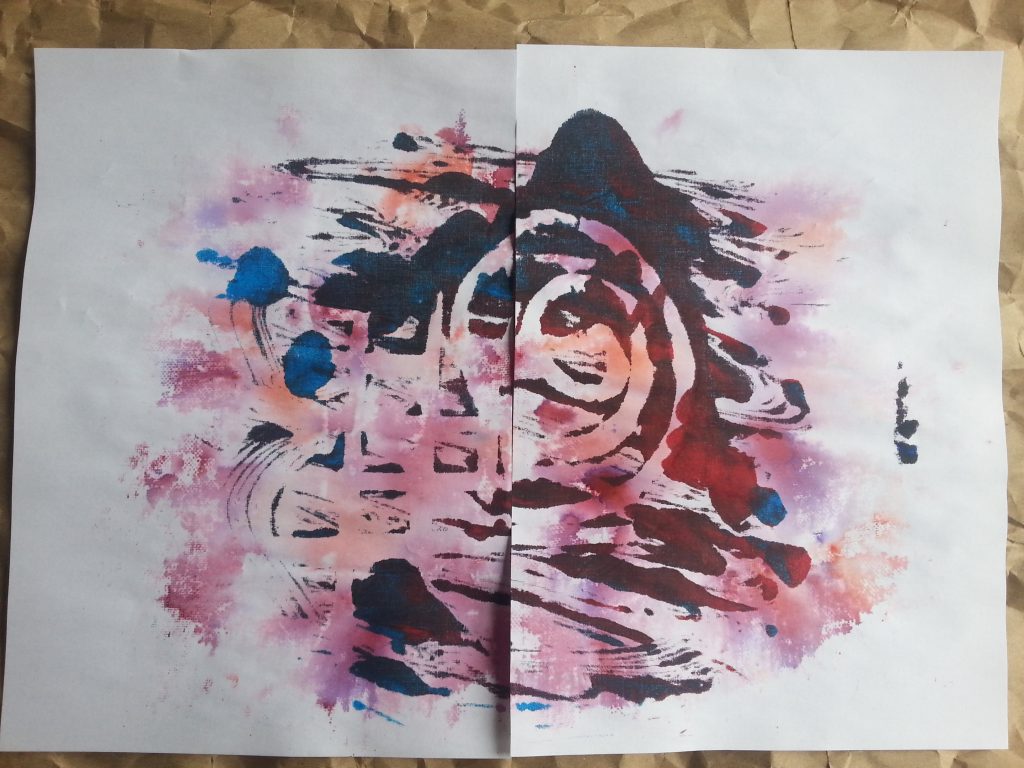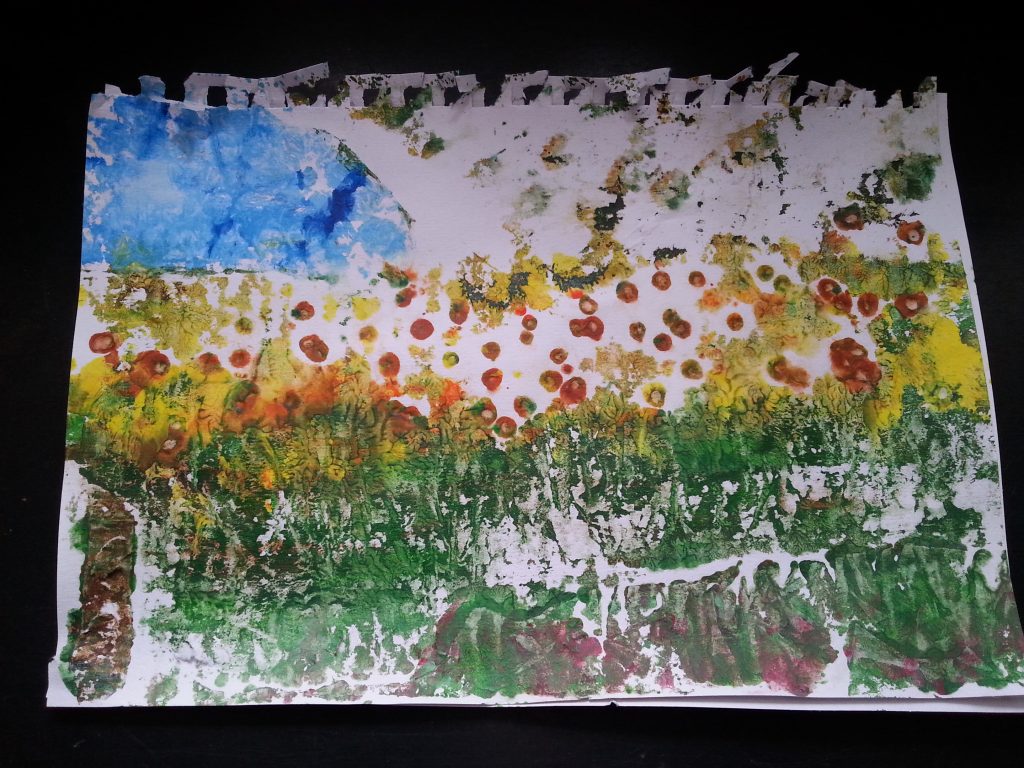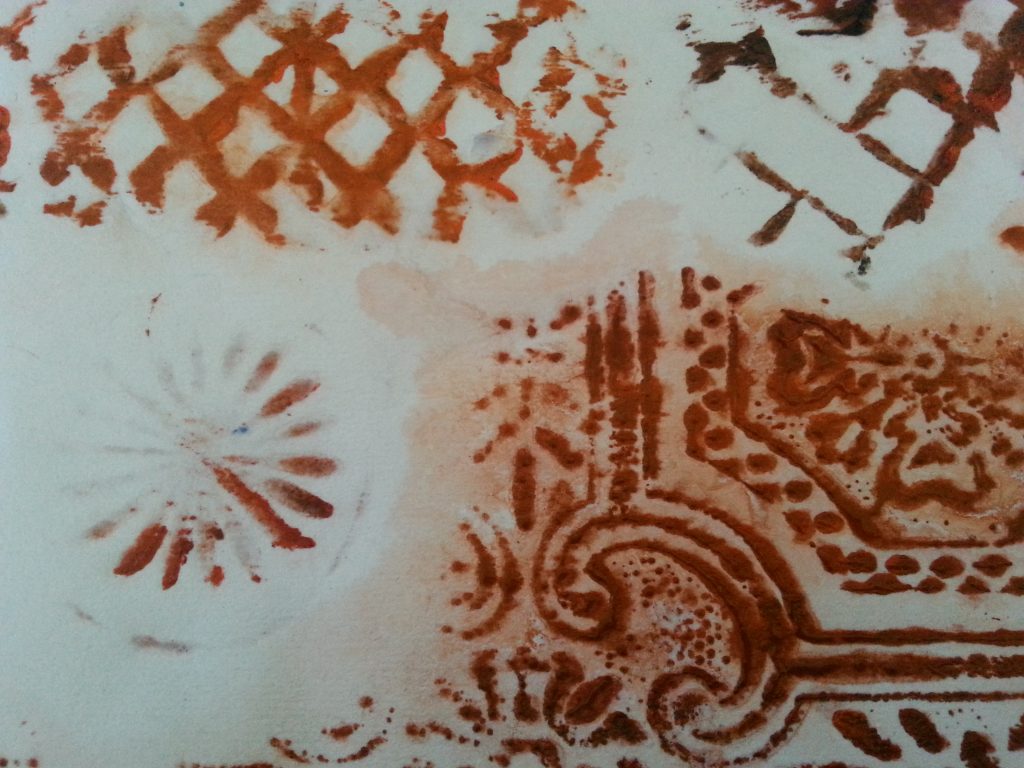Having reviewed the work completed for this assignment I have selected the following pieces as being the ones I consider to be the most successful. In some cases this is not necessarily because they are ‘the best’ pieces, but in some instances because they demonstrate the most improvement and the successful implementation of learning and progress.
Monoprinting – Mark-making
From this exercise I felt that the following pieces were the most successful:
- MMT Assignment 4 – Monoprinting – Exercise One – Mark-making – Hairdye brush
- MMT Assignment 4 – Monoprinting – Exercise One – Mark-making – Potato masher
- OCA MMT Assignment 4 – Monoprinting – Exercise One – Mark-making – Credit card
- MMT Assignment 4 – Monoprinting – Exercise One – Mark-making – Scrumpled plastic
- OCA MMT Assignment 4 – Monoprinting – Exercise One – Mark-making – Paste spreader
- OCA MMT Assignment 4 – Monoprinting – Exercise One – Mark-making – Paste spreader
- OCA MMT Assignment 4 – Monoprinting – Exercise One – Mark-making – Handprint
- OCA MMT Assignment 4 – Monoprinting – Exercise One – Mark-making – Handprint
The hair dye brush gave excellent, detailed lines and effective marks on the plate. The credit card pieces have a feeling of sweeping fluidity and movement; the potato masher for the interaction between the background and the imprint. The imprints made by the scrumpled plastic are very delicate and subtle. The two purple/green samples made with the paste spreader create good light and shade and have movement and a 3-d quality. The handprint is very detailed, even showing the lines on the palm. The bacground swirls and shapes left by the brayer where the paint was spread out give a lively range of shape and colour.
Monoprinting – Drawing onto the printing plate
There wasn’t a great deal of choice in this exercise as I felt that few of the standard samples were successful. However, I did find the shaving foam prints much more pleasing:
- MMT Assignment 4 – Monoprinting – Exercise 3 – Drawing onto the plate
- MMT Assignment 4 – Monoprinting – Exercise 3 – Drawing onto the plate
- MMT Assignment 4 – Monoprinting – Exercise 3 – Drawing onto the plate
- MMT Assignment 4 – Monoprinting – Exercise 3 – Drawing onto the plate
- MMT Assignment 4 – Monoprinting – Exercise 3 – Drawing onto the plate
- MMT Assignment 4 – Monoprinting – Exercise 3 – Drawing onto the plate
- MMT Assignment 4 – Sketchbook
Using fabric paints on the shaving foam ‘plate’ created beautiful, delicate prints with metallic hightlights and stunning swirling, marbled patterns. Of the prints from the glass plate, the sunset and mountains was the only really vaguely successful outcome.
Monoprinting – Back drawing
- MMT Assignment 4 – Monoprinting – Exercise Two – Back Drawing – Potato masher
- MMT Assignment 4 – Monoprinting – Exercise Two – Back Drawing – Rubber stamp
- MMT Assignment 4 – Monoprinting – Exercise Two – Back Drawing – Rubber stamp
- MMT Assignment 4 – Monoprinting – Back drawing
- MMT Assignment 4 – Monoprinting – Back drawing
- MMT Assignment 4 – Monoprinting – Back drawing
- MMT Assignment 4 – Monoprinting – Exercise Two – Back Drawing – Finger printing
- MMT Assignment 4 – Monoprinting – Exercise Two – Back Drawing – Finger printing
- MMT Assignment 4 – Monoprinting – Back drawing
- MMT Assignment 4 – Monoprinting – Back drawing
- MMT Assignment 4 – Monoprinting – Back drawing
The back-drawing samples that I felt were the most successful ranged across the different implements I used. The potato masher I chose because of both the mark made by the masher and the combination of colours and shapes in the background; the rubber stamps are some of my favourite images, particularly the swirling movement in the black and blue samples; the snowflakes were interesting because they illustrate that it is possible to use even children’s craft items to produce good prints; I also like the way that the negative and positive images are equally interesting. These would make good layered prints. I chose the finger paints because I like the swirl shapes and the two pulls give quite different effects due to the spread of the colours; as with the mark-making sample in exercise one, the paste spreader samples in exercise two are also interesting. These show the same implement used on three different surfaces (plasticized paper, fabric, and tumble dryer sheet) and the variation in effect that simply changing the medium can achieve. The background on the plasticized paper is very delicate and quite fascinating.
Monprinting – Working with stencils
- MMT Assignment 4 – Monoprinting – Exercise 4 – Working with stencils
- MMT Assignment 4 – Monoprinting – Exercise 4 – Working with stencils
- MMT Assignment 4 – Monoprinting
- MMT Assignment 4 – Monoprinting
- MMT Assignment 4 – Monoprinting
- MMT Assignment 4 – Monoprinting
The combination stencils were some of my favourite pieces. The colours and patterns have depth, movement and an intensity that I find satisfying. I can see potential to extend this style of print and explore using is more widely on fabric and other media.
Collatype
Of the samples produced for this project I found the following pieces to be the most successful:
- MMT Assignment 4 – Collatype – Exercise 3 – Collatype collage prints
- MMT Assignment 4 – Collatype – Exercise 3 – Collatype collage prints
The landscape print shows good use of colour and the print picked up a good range of texture. The abstract composition has good detail and a good range of shapes.
